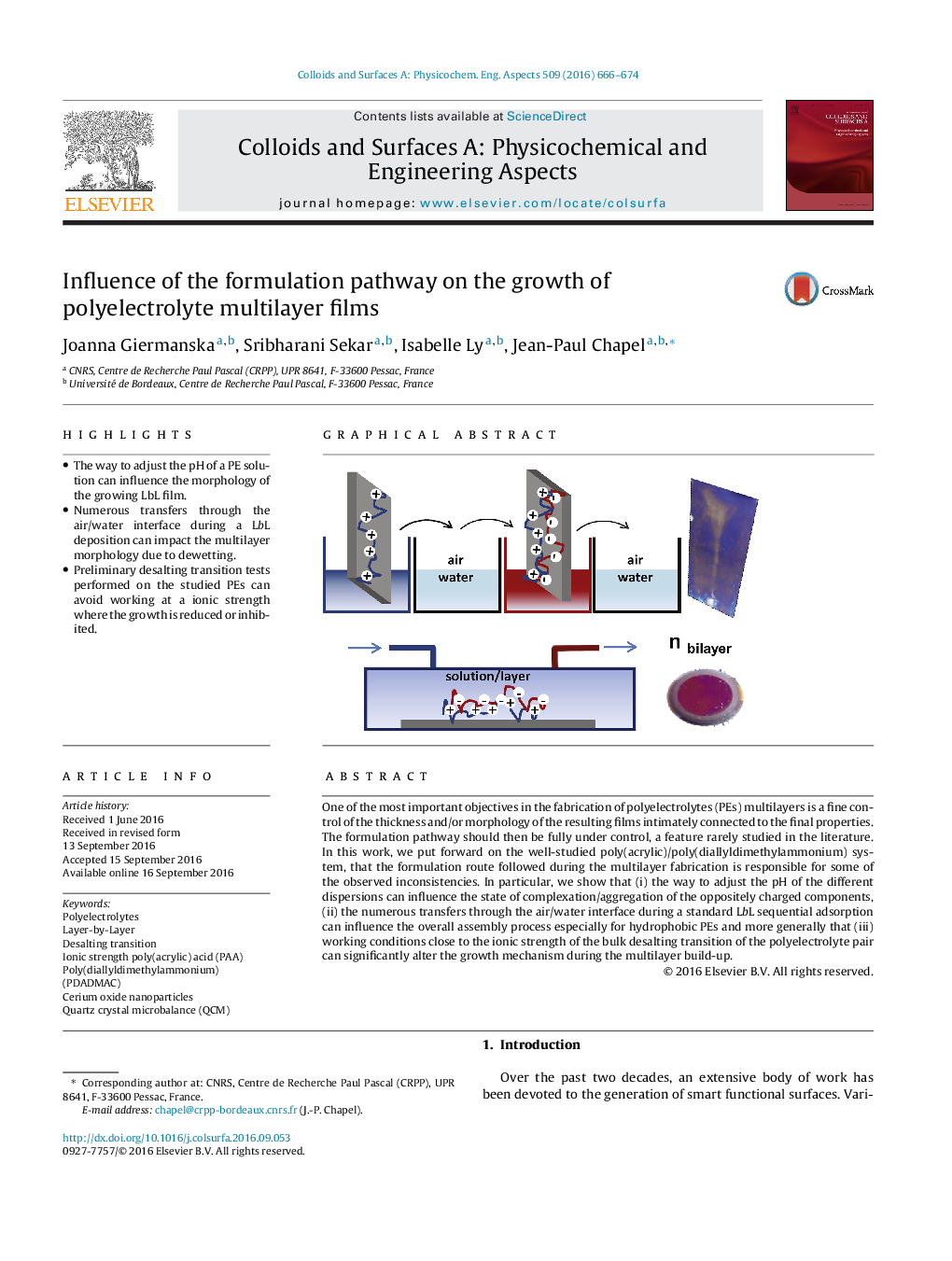| کد مقاله | کد نشریه | سال انتشار | مقاله انگلیسی | نسخه تمام متن |
|---|---|---|---|---|
| 4982703 | 1453864 | 2016 | 9 صفحه PDF | دانلود رایگان |
- The way to adjust the pH of a PE solution can influence the morphology of the growing LbL film.
- Numerous transfers through the air/water interface during a LbL deposition can impact the multilayer morphology due to dewetting.
- Preliminary desalting transition tests performed on the studied PEs can avoid working at a ionic strength where the growth is reduced or inhibited.
One of the most important objectives in the fabrication of polyelectrolytes (PEs) multilayers is a fine control of the thickness and/or morphology of the resulting films intimately connected to the final properties. The formulation pathway should then be fully under control, a feature rarely studied in the literature. In this work, we put forward on the well-studied poly(acrylic)/poly(diallyldimethylammonium) system, that the formulation route followed during the multilayer fabrication is responsible for some of the observed inconsistencies. In particular, we show that (i) the way to adjust the pH of the different dispersions can influence the state of complexation/aggregation of the oppositely charged components, (ii) the numerous transfers through the air/water interface during a standard LbL sequential adsorption can influence the overall assembly process especially for hydrophobic PEs and more generally that (iii) working conditions close to the ionic strength of the bulk desalting transition of the polyelectrolyte pair can significantly alter the growth mechanism during the multilayer build-up.
150
Journal: Colloids and Surfaces A: Physicochemical and Engineering Aspects - Volume 509, 20 November 2016, Pages 666-674
